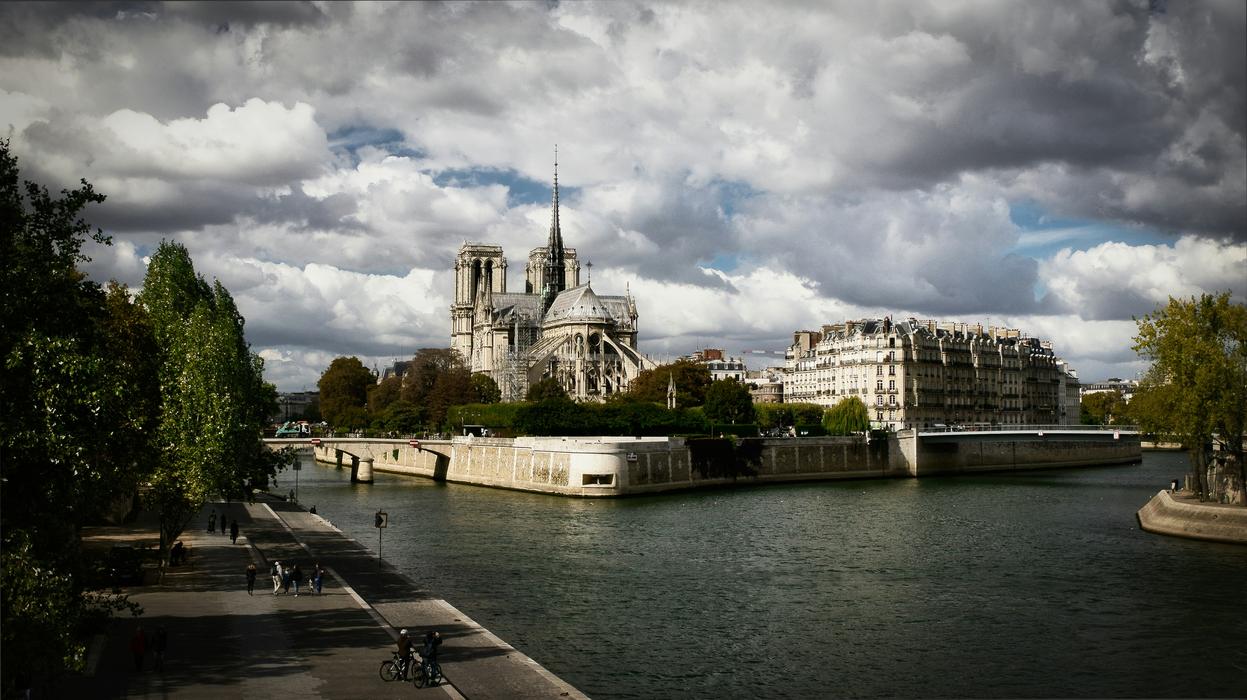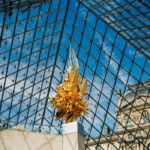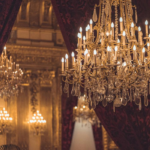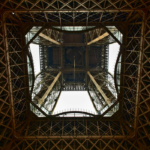Introduction to Paris Architecture
Paris, often referred to as the "City of Light," is a captivating assemblage of architectural marvels. From medieval edifices to contemporary creations, the city’s skyline reveals a blend of historical styles and modern ingenuity. This comprehensive Paris architecture guide invites you to explore the iconic designs that not only define Paris but also encapsulate the cultural heritage of France. Each building narrates a unique story, illuminating the evolution of the city's architectural landscape through the ages.
Iconic Landmarks of Paris
The Eiffel Tower
No Paris architecture guide would be complete without the mention of the Eiffel Tower. Constructed between 1887 and 1889 as the entrance to the 1889 World's Fair, Gustave Eiffel's iron lattice tower has become the quintessential symbol of Paris. Soaring to a height of 1,083 feet, it held the title of the tallest man-made structure in the world for 41 years. Its groundbreaking design challenges classical architecture through its iron structure, offering visitors breathtaking panoramic views of the city from its observation decks.
Notre-Dame Cathedral
Notre-Dame de Paris is an exemplar of French Gothic architecture, with origins dating back to the 12th century. Renowned for its intricate facade and enchanting stained-glass windows, this cathedral serves as both a sacred religious site and an architectural cornerstone. The flying buttresses, gargoyles, and ribbed vaults highlight the innovative engineering of its time. Despite the devastating fire in 2019, restoration efforts are fervently underway to preserve this iconic structure's historical significance.
The Louvre Museum
Once a royal palace, the Louvre is now one of the largest and most visited museums globally. The architectural journey of the Louvre reflects a myriad of styles, transitioning from a medieval fortress to the stunning glass pyramid designed by I. M. Pei, inaugurated in 1989. This contemporary pyramid harmonizes beautifully with the classical lines of the original palace, symbolizing the coexistence of the old and new.
The Sacré-Cœur Basilica
Perched atop Montmartre Hill, the Sacré-Cœur Basilica is a striking example of Romano-Byzantine architecture. Completed in 1914, this basilica not only offers a spiritual refuge but also provides some of the finest views of Paris. Its contrasting green domes and intricate mosaics make it an essential highlight in any Paris architecture guide.
Styles of Architecture in Paris
Gothic Architecture
Gothic architecture reached its zenith in Paris during the Middle Ages, characterized by pointed arches, ribbed vaults, and flying buttresses. Notre-Dame Cathedral and Sainte-Chapelle serve as prime examples of this style, reflecting the craftsmanship and religious fervor of the era. This architectural movement emphasizes verticality and luminosity, creating a celestial atmosphere.
Haussmannian Architecture
In the mid-19th century, Baron Haussmann led a massive urban renewal initiative in Paris, resulting in the emergence of Haussmannian architecture. This style features uniform building heights, wrought-iron balconies, and elegant stone facades. The creation of wide boulevards not only enhanced the aesthetic appeal but also facilitated urban transport, becoming quintessential elements of Paris's charm.
Art Nouveau
Emerging in the late 19th century, Art Nouveau is characterized by its organic forms, elaborate embellishments, and fluid lines. Paris was a hub of this movement, with architects like Hector Guimard designing iconic metro station entrances adorned with floral motifs. The Castel Beranger exemplifies the style's dedication to achieving a harmonious integration of architecture and nature.
Modern and Contemporary Architecture
Paris embraces not only historic styles but also contemporary design. The Centre Pompidou, renowned for its bold industrial aesthetic with exposed pipes and vibrant colors, defies traditional architecture. Similarly, the Fondation Louis Vuitton, designed by Frank Gehry, showcases a modern interpretation with its flowing glass forms that appear to capture movement. This dynamic contrast with historic architecture illustrates the ever-evolving character of Paris.
Hidden Architectural Gems in Paris
Palais Garnier
Often eclipsed by more famous landmarks, the Palais Garnier, or Opéra Garnier, stands as a stunning example of neo-Baroque architecture. Completed in 1875, this opera house boasts grand staircases, majestic chandeliers, and luxurious decorations. Its opulent interiors captivate visitors, immersing them in artistic wonder.
La Conciergerie
Once a royal palace and later a prison, La Conciergerie blends Gothic and Renaissance architectural elements. Its formidable facade, crenellated towers, and exquisite chapels bear witness to its rich history. This lesser-known site provides insights into some of France's darker historical narratives, making it a compelling stop on your architectural exploration.
The Petit Palais
Home to the City of Paris Museum of Fine Arts, the Petit Palais exemplifies Beaux-Arts architecture. Constructed for the 1900 Exposition Universelle, its ornate facade and serene garden create an oasis in the midst of the bustling city. The interior houses an impressive array of art, offering a cultural retreat for visitors.
Visiting Paris: Tips for Architecture Enthusiasts
Best Times to Visit
To fully appreciate the architectural wonders of Paris, consider visiting in the spring (April to June) or early autumn (September to October). These seasons provide pleasant weather and fewer crowds, allowing you to engage with the structures without distractions.
Guided Tours
While independent exploration can be rewarding, participating in guided architecture tours offers a deeper understanding of the city's buildings. Knowledgeable guides illuminate the stories and details behind each structure, enhancing your overall experience of Paris’s rich architectural heritage.
Essential Photography Tips
Bring your camera along to capture the stunning architectures of Paris. Early mornings or late afternoons provide the best natural lighting for photographs. Don't hesitate to explore different angles; unique perspectives can unveil impressive details often overlooked.
Discovering Local Architecture
While the iconic landmarks are essential to see, wandering through Parisian neighborhoods is invaluable. Discover areas like Le Marais or Montmartre, which offer charming streets and local artistry, as well as smaller architectural gems not included in tourist guides. The blend of historic and modern designs in daily life offers a fresh appreciation for the city's architectural diversity.
Conclusion
This Paris architecture guide has navigated you through both renowned landmarks and hidden treasures, making the City of Light an enticing destination for architecture enthusiasts. The city itself is a living museum, with each structure sharing a fragment of its historical and cultural tale. By understanding the architectural styles that have shaped Paris, you cultivate a richer appreciation for the beauty embedded in this exceptional city. So whether you find yourself strolling along the Seine or enjoying a Parisian park, take a moment to gaze upward and admire the awe-inspiring buildings that illustrate the story of Paris itself.
FAQ Section
What is included in the Paris architecture guide?
The Paris architecture guide encompasses iconic landmarks, hidden gems, and the various architectural styles that characterize the city, providing a holistic understanding of Paris's architectural landscape.
How can I explore the architecture of Paris?
You can explore the architecture of Paris by visiting its prominent landmarks, joining guided architecture tours, or wandering through neighborhoods to discover lesser-known sites, all outlined in the Paris architecture guide.
Are there specific architectural styles highlighted in the Paris architecture guide?
Yes, the Paris architecture guide emphasizes several architectural styles, including Gothic, Haussmannian, Art Nouveau, and modern contemporary architecture, showcasing the city's rich diversity.
Why should I use a Paris architecture guide?
A Paris architecture guide offers curated insights into significant structures, their historical contexts, and architectural styles, enriching your appreciation for the city’s design and artistic heritage.
Can I find hidden architectural gems in the Paris architecture guide?
Absolutely! The Paris architecture guide includes not only well-known landmarks but also hidden gems that capture the unique and lesser-seen aspects of the city’s architectural allure.
For additional resources and insights into Paris's architectural wonders, visit The Official Paris Tourism Website.



